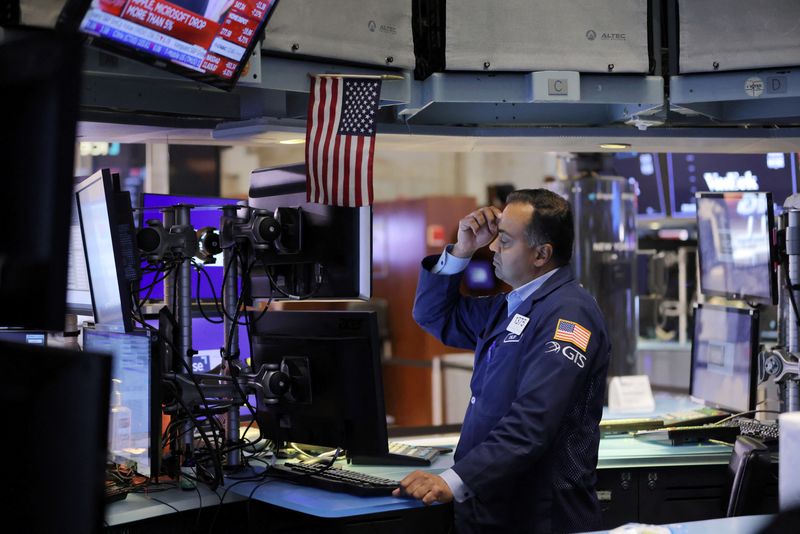By Devik Jain and Ankika Biswas
(Reuters) - U.S. stock indexes rose on Wednesday ahead of a widely expected hefty rate hike from the Federal Reserve, with investors waiting for cues on the length and depth of further policy tightening to tame surging price pressures.
Ten of the 11 major S&P 500 sectors were up in early trading, led by a 1.1% jump in energy and industrial shares.
The U.S. central bank will likely lift its policy rate by 75 basis points for the third time to a 3.00-3.25% range at the end of its two-day policy meeting, which will be followed by Fed Chair Jerome Powell's news conference.
Updated economic projections from policymakers will be in focus, as investors would like to gauge where interest rates are headed, how long it would take inflation to fall and the pain rising prices are inflicting on the U.S. economy.
"What (investors) really want to see is whether or not we are going to have a continued, super hawkish Fed in terms of the way that messaging has been - are they really committed to getting inflation under control at the risk of pulling the economy into a recession," said Brandon Pizzurro, director of public investments at GuideStone Capital Management.
Markets are pricing in a 21% chance of a 100 bps rate increase later in the day and seeing a terminal rate at 4.50% in March 2023.
The benchmark S&P 500 is hovering near two-month lows and is below 3,900 points - a level considered by technical analysts as strong support for the index.
"If (stocks) drop on disappointing Fed, no one should be surprised if we test those June (lows)," said David Wagner, portfolio manager at Aptus Capital Advisors in Cincinnati, Ohio.
As interest rates continue to creep up, pressuring stock valuations, Wagner recommends having a portfolio tilted toward value stocks.
The S&P 500 value index, which includes cyclical and economy-linked stocks such as banks, energy, industrials and materials, is down 11.4% so far this year, compared with a 25.2% drop in its growth counterpart, which is dominated by technology shares.
The yield curve inversion between the two-year and 10-year notes - seen as a recession harbinger - and growing evidence of the impact of decades high inflation on earnings outlooks from companies ranging from FedEx Corp (NYSE:FDX) to Ford Motor (NYSE:F) Co have also added to woes in a seasonally weak period for markets.
At 9:40 a.m. ET, the Dow Jones Industrial Average was up 155.88 points, or 0.51%, at 30,862.11.
The S&P 500 was up 18.85 points, or 0.49%, at 3,874.78, and the Nasdaq Composite was up 29.48 points, or 0.26%, at 11,454.53 on boost from a more than 0.5% rise in shares of megacap growth stocks such as Apple Inc (NASDAQ:AAPL) and Microsoft Corp (NASDAQ:MSFT).
Meanwhile, shares of U.S. defense companies Northrop Grumman Corp (NYSE:NOC), Raytheon (NYSE:RTN) Technologies Corp and Lockheed Martin Corp (NYSE:LMT) rose between 2.6% and 3.1% as President Vladimir Putin ordered Russia's first mobilization since World War Two.
Coty Inc gained 4.9% after the CoverGirl cosmetics maker raised its first quarter 2023 revenue and gross margin forecasts on stronger demand for beauty products.
General Mills Inc (NYSE:GIS) added 4.5% after the Cheerios cereal maker raised full-year sales and profit outlook, banking on higher prices and resilient demand for its breakfast cereals, snack bars and pet food.

Advancing issues outnumbered decliners by a 2.16-to-1 ratio on the NYSE. Declining issues outnumbered advancers for a 1.03-to-1 ratio on the Nasdaq.
The S&P index recorded two new 52-week highs and six new lows, while the Nasdaq recorded 14 new highs and 141 new lows.